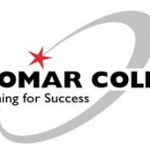- Industry: Education
- Number of terms: 12355
- Number of blossaries: 0
- Company Profile:
Founded in 1946, Palomar College is a public two-year community college in the city of San Marcos, located in north San Diego County, California. Palomar offers over 300 associate degree, certificate programs and is designated by the U.S. Department of Education as an Hispanic-Serving Institution ...
A long period of time during which earth's climate cools, causing glaciers to expand out from the poles and mountains covering vast areas. The glacials of the Pleistocene Epoch mostly occurred in the northern hemisphere. See interglacial.
Industry:Anthropology
A complex unit of protoplasm, usually with a nucleus, cytoplasm, and an enclosing membrane. All plants and animals are composed of one or more microscopic cells. The smallest organic unit capable of carrying out all of the functions normally attributed to life is a cell. See eukaryotic cell and prokaryotic cell.
Industry:Anthropology
A kind of protein produced by the body to identify and neutralize or destroy alien antigens. Antibodies are involved in the rejection of mismatched blood transfusions and organ transplants. They are also responsible for recognizing and eliminating bacteria and viruses. Antibodies provide a major defense for our bodies against invasion by alien organisms.
Industry:Anthropology
A kind of energy charged subnuclear particle (consisting of an electron or a positron) given off by some isotopes when they decay or fission.
Industry:Anthropology
A relative dating method based on the fact that artifact types change through time in frequency as a result of new technologies, styles, and available construction materials. The frequency of artifact types in a stratum can be compared to known frequency changes previously recorded for an ancient culture. In this way, the stratum can be dated relative to other strata or sites. When a seriation sequence has been cross-calibrated with reliable chronometric dating methods, it can be considered a calibrated relative technique.
Industry:Anthropology
A biological trait that has not changed over time from the ancestral form and/or function that was present in the species from which it came. See cladistics.
Industry:Anthropology
A medical condition characterized by fatigue, weakness, poor appetite, weight loss, and paleness or a yellowish tinge to the skin and eyes resulting from a deficiency of red blood cells or insufficient amounts of hemoglobin molecules within the red cells. The result in both cases is a significantly reduced ability to get oxygen to the cells of the body. There are many different genetic and environmental causes of anemia.
Industry:Anthropology
A dramatic reduction in genetic diversity of a population or species resulting from an ecological crisis that wipes out most of its members. The limited genetic diversity of the few survivors is the pool from which all future generations are based. This is one of the small population size effects.
Industry:Anthropology
A constriction in a chromosome where two or more chromatids come together.
Industry:Anthropology
Une méthode de datation relative repose sur le fait qu'OS enterrés dans le sol progressivement perdre azote et gagner en fluor et autres oligo-éléments. Le taux auquel ces changements se produisent dépend de l'environnement local. Si les deux os du même site ont nettement différentes quantités d'azote et de fluor, c'est une forte indication qu'ils ne venaient pas de la même période de temps. L'OS avec le moins d'azote et de la plus grande quantité de fluor est probablement la plus ancienne.
Industry:Anthropology
